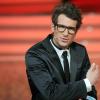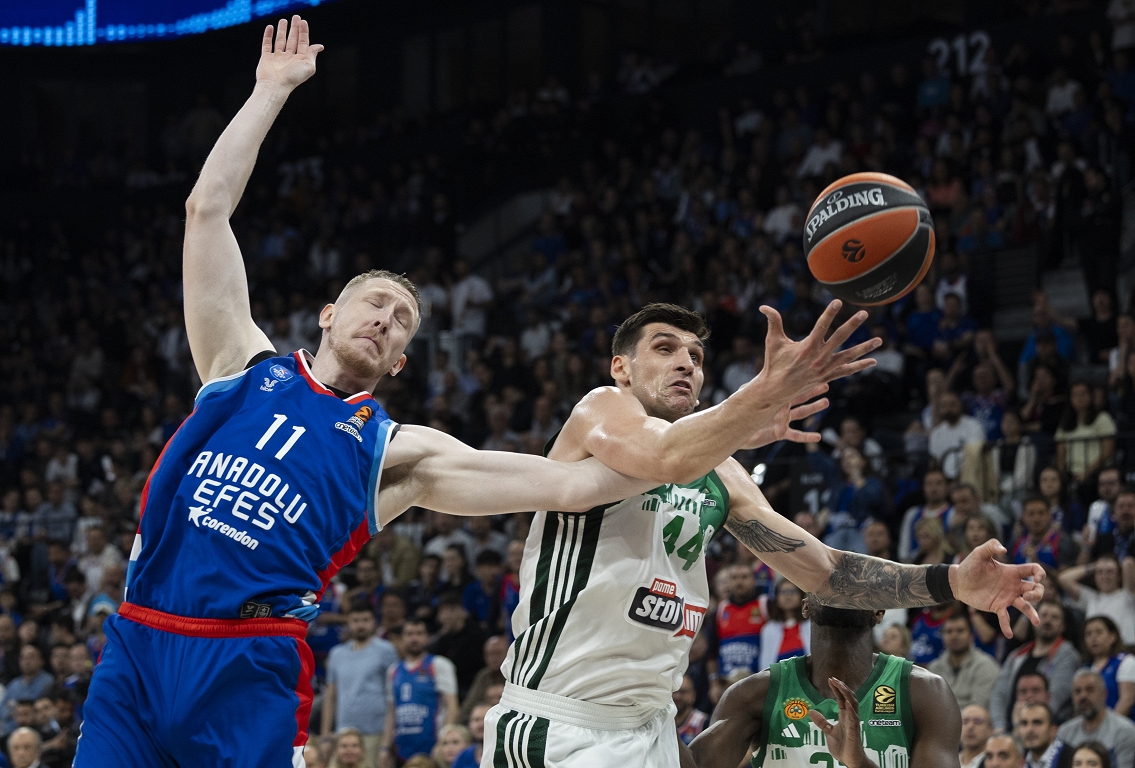Fighting, bribery, deaths of deaths overflowing: the eventful history of the conclave
/s3/static.nrc.nl/wp-content/uploads/2025/05/02101942/0305_PausDef.jpg)
The pope is dead, long live the pope! Now that Francis is buried, next week the conclave is starting where 133 cardinals will decide who will be the new bishop of Rome. Only when white smoke is circling from the chimney of the Sixtine Chapel, can they leave the Vatican and have 1.4 billion Catholics a leader again.
The Oscar -winning film Conclave Painted the conclave As an exciting battle between men who try to attract power in the Catholic Church with low regions. Insofar as there is a view, it was not so bad with such a squabbling during the most recent pope elections, but a dive in history shows that the fight around the seat of the Apostle Peter has indeed regularly got out of hand.
Multiple dead
In the first millennium of the existence of the church, the appointment of a new pope was an unclear state without rules, in which the Roman nobility, the people, the clergy and powerful European rulers all pushed a finger in the porridge. Often the choice of a new pope (that word became common from the year 300) ended on an armed meeting between the supporters of the various candidates.
This is also the case with the election struggle of 498, the first one that is certain that there was a bribery. The race went between Symmachus and Laurentius: one checked the area around Saint Pieter, the other had his headquarters in the Sint-Jan van Lateranen, the oldest basilica in Rome. Advocates of both contenders tackled each other and several people were killed.
In the meantime, the factions tried to buy King Theodorik of Italy and his counselors. De Vorst eventually opted for Symmachus, who promptly prohibited a campaign to be conducted around the election of a new pope. It was up to the sitting Pope to designate his successor in life, he thought.
Little came of this plan; Pope Nicolaas II did not end the unclear appointment rules until 1059. He decided that a pope should be chosen by a college of cardinals – as it still happens today. However, this regulation did not mean that from this moment everything went smoothly, or that people from outside the college no longer interfered with the pope choice.
Poke with a spear
The pope election of 1241 was particularly inheritance. It was high summer and there were only ten cardinals in Rome, who were strongly divided among the question of how to deal with the German emperor Frederik II, who waged war in Italy at that time. No candidate received the required two -thirds of the votes.
At one point Matteo Orsini, the most important driver of Rome, had had enough of this indecision and locked the cardinals in an old building – together with a coffin containing the Dead Pope. Those who threatened to fall asleep during the day received a poke from a watchman with a spear. To further put pressure on the cardinals, Orsini did not let the crowded toilets empty. All this led to severe odor nuisance thanks to the high temperatures.
Nevertheless, the cardinals could not come to a choice. Only when one of them died due to the miserable circumstances – there were also rumors about poisoning – the choice fell on Goffredo Castiglione, who Koos the name Celestinus IV. Unfortunately he was so weakened by the unsanitary election struggle that he already killed a few weeks after accepting his office.
In the literal sense of the word this was the first conclave, because the cardinals were cum clave (locked with a key) to speed up their decision. That happened against their will, but in mid -1270 they asked themselves to be enclosed. They have been in consultation since December 1268 about the choice of a new pope, without having a centimeter.
Longest election ever
The circumstances were apparently better that year than in 1241, because it was also not possible to make the decision under lock and key. Inrinerated, a Roman driver then had the roof of the building. The cardinals were now exposed to the elements – and the Holy Spirit could also be easier, they hoped.
That was disappointing, because only after another year did a committee of six cardinals come to a choice (of the original nineteen electors there were now two dead). Their candidate: Teobaldo Visconti, no cardinal and as a crusader stationed in Syria. It took another six months before he arrived in Rome on March 27, 1272, as Pope Gregorius X. After forty months – the longest sede vacant Once – the Catholic Church again had a leader.
Gregorius decided that the chaos surrounding his election was not worth repeating. In 1274 he therefore published De Bul Ubi periculumwhich stipulated that the cardinals had to be locked up in a conclave from the first day of a pope election.
Clear rules or not, even after Gregorius’ intervention, the elections still regularly got out of hand – especially after the papacy had fled to Avignon in France in the early fourteenth century. When Pope Gregorius XI died in Rome during a trip in 1378, the local population saw her chance: she demanded that the new Pope would be a Roman. The moment the sixteen kardinals traveled with the Pope went into conclave, a voice from the crowded crowd sounded: « If you don’t listen, we will make your heads just as red as your hats! »
To fool the public, the cardinals put an elderly Roman colleague in front of the window and stated that he had been chosen as Pope. The gray rushed to his house to plunder it – an old tradition. The conclave now quickly chose Bartolomeo Prignano to Pope Urbanus VI, on the assumption that he would give up that position as soon as they fled the city.
However, Prignano immediately turned out to be devoted to his new position and refused – after which the French cardinals, once outside Rome, chose a counterpart: Clemens VII. The two popes excommunicated each other and the so -called Western Schism – in which there were stopping in Avignon and Rome for forty years – was a fact.
Mistresses
During the Renaissance, the violence around the pope elections decreased slightly, but it ran out of the spots with corruption. For the conclave of 1492, for example, the French king Charles VIII used 200,000 ducats to move the cardinals to the right choice, Giuliano della Rovere. This Italian found the Spaniard Rodrigo Borgia, who in turn scattered with palaces, cities and bishop’s seats. Eventually 18 of the 23 cardinals would be pleased with this Simonie – acting out of profit in spiritual offices.
The high gentlemen chose Borgia, who, as Pope Alexander VI, accepted the role of Jesus’ deputy on earth. His pontificate was of great songs: he raised in mistresses and gave his numerous (false) children jobs in the church. There were also rumors about murder attacks he had committed.
After he died in 1503, his successor – the revenge of Giuliano della Rovere, who chose the name Julius II because, like Julius, he loved warfare – Borgia’s apartments because he had sealed because of all the sins. They remained locked until the nineteenth century.
Eavesdropping equipment
In the early modern period, the conclave came in calmer waters – although geopolitical interests continued to play a major role in the elections. Both France and Austria were a lot to see a favorably paus on the throne. Both royal houses – the Bourbons and the Habsburgs – claimed a veto right if the conclave was not given.
In 1740, such a tug of war led to an election of six months, whereby only after 255 voting rounds Benedict XIV came out as the winner. (Four cardinals died during the deliberations. The deadliest conclave remained that of 1287-88, when six of sixteen electors succumbed to malaria.) There had been no bribery this time; The new pope had even made his honesty the spearhead of his campaign.
Emperor Frans Joseph of Austria was the last worldly ruler to use his Vetrorrecht in 1903. Paus Pius X – to whom, thanks to this intervention, the choice had ultimately fell – put an end to this outdoor interference. Anyone who was still involved in the conclave would be excommunicated.
However, because the pope is a powerful man, that temptation remained great. In 1963 – in the heat of the Cold War – the American secret service CIA wanted to know as quickly as possible who would become the new leader of the Catholic Church. One of the cardinals smuggled a radio in for communication via the ether, which he would have flushed through the toilet after use. Since then, the Sistine Chapel and the sleeping quarters of the cardinals have been checked for electronic (eavesdropping) equipment.
In 2013 it took the fourth voting round before Jorge Mario Bergoglio took a clear lead. When this Argentinian cardinal passed the 77 voices in the fifth round of voting that gave him the two -thirds majority, applause sounded in the Sixtine Chapel.
When asked if he accepted his nomination, Fransicus I replied: « Even though I am a sinner, I accept. »

:format(jpeg):fill(f8f8f8,true)/s3/static.nrc.nl/podcasts/wp-content/blogs.dir/131/files/2021/03/haagsezakenfeatured.png)
:format(jpeg):fill(f8f8f8,true)/s3/static.nrc.nl/taxonomy/061fd2f-Rusman%252C%2520Floor%25202023%2520%255BDoomernik%25202320%255D%25201280%2520WEB.png)
:format(jpeg):fill(f8f8f8,true)/s3/static.nrc.nl/taxonomy/6b6e7c1-Sluimer1280.png)




